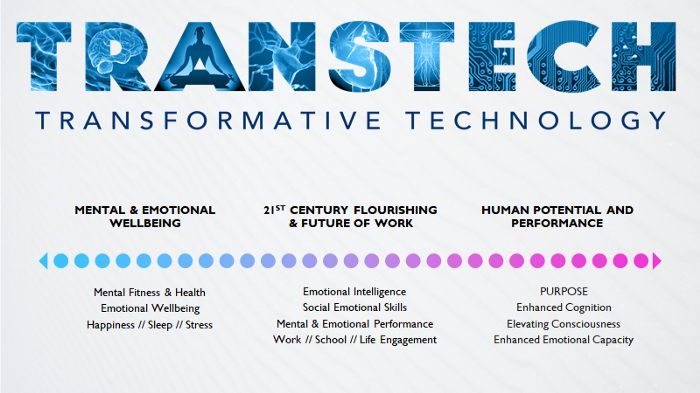How tech is transforming the workplace and creating opportunities for people with disabilities including mental health challenges.

Today’s corporations have embraced the fact that hiring and retaining employees goes beyond just offering a higher salary and increasingly demonstrate their understanding that the high stress level in today’s fast-paced workplaces requires a willingness to use innovative means for supporting employees with disabilities — including mental health challenges like anxiety or depression which are a common result of stress. Max Martin, marketing manager at Spring Health, stated, “Long hours and short deadlines are not uncommon for engineers, and I’ve seen people’s mental health suffer as a result of the stress from these roles.” Researchers have long understood that stress and burnout are linked to higher turnover rates.
In this article, we will cover a reconceptualization of the term “disability” within the workplace, funding opportunities for developing workplace wellbeing oriented technology, some of the current innovators developing solutions to meet workplace wellness needs, and future directions for consideration.
Defining “Disability” within the Workplace Context
Before we discuss the current state of technology for disabilities, it is important to start with a foundational understanding of how “disabilities” is defined. Many around the world still focus on thinking of disabilities and discrimination related to disabilities as being based on physical disabilities. However, studies have shown that in actuality, individuals who disclose a mental disability might experience as much as seven times more discrimination than their physically disabled peers. From a workplace perspective, the Equal Employment Opportunity Commission (EEOC) in the United States considers both mental and physical impairments in defining disabilities and includes having a condition such as cancer (even if in remission) as a disability.
Based on this, our definition of disability is inclusive of mental conditions such as anxiety, depression, ADHD, and autism, and temporary physical disabilities such as cancer, in addition to the more traditionally established definitions of disability based on physical handicaps.
The Benefits of Developing Tech for Audiences with Disabilities
When seeking early adopters for innovative technology, individuals with disabilities could be future fans or beta testers. Return on Disability reports that the market for disability products is 1.3 billion people with $1.2 trillion in annual disposable income. In addition to direct business-to-consumer funding potential, many grants also support research for helping individuals with disabilities. These grants are offered from nonprofit, government, and even public sector companies like Microsoft.
Funding for AI and Technology Relating to Wellbeing
Microsoft offers a grant program, AI for Accessibility, with $25 million allocated in tech support, technology, mentorship, and cash. Two other funding opportunities to consider are Neuro-Wellness Grant from Joy Ventures and California Wellness Foundation. The AI for Accessibility grant program provides an example of how one’s technology and its applications are valuable enough to be funded; considering its impact and support for individuals with disabilities. Also, there are many nonprofit and government grants that support research for helping individuals with disabilities. Furthermore, the technologies that are funded by these grants are not limited to disabled users exclusively.
Three key areas where tech innovators are making strides to improve workplace thriving are with memory enhancement technology, AI and HR, and in improving Employee health and the accessibility of health care.
1. Memory Enhancement Technology
Memory enhancement, from embedded chips to external wearables, is one niche within wellbeing tech that has potential for multiple user groups. While focusing on developing chips for helping people who had traumatic brain injuries and suffer from memory loss, Hampson and his team have published a recent study demonstrating AI used to improve memory retention of 37%. Through technology that essentially uses predictive software to know when to zap the brain and help a memory be embedded, rather than be lost. The researchers state that the next application of their research may be to other disabled groups, such as veterans, or stroke and Alzheimer’s patients. Also, Hampson and his team are looking at other ways to make their technology less invasive in the future (i.e., not require brain surgery to accomplish). The $77 million invested by DARPA (U.S. Defense Advanced Research Projects Agency), in memory-generation technology and research suggests that memory enhancement is a fundable area for tech development. Not only does the work being done on memory enhancement help these disabled groups potentially be able to re-integrate into the workforce with increased memory, it has future applications for other groups who struggle with other intellectual disabilities; such as executive functioning challenges of focus, autism, ADHD, and dyslexia. One startup, Nia Therapeutics, is working to make a similar technology commercially viable with a specific focus of “reducing cognitive disability and increasing productivity.” Imagine a neural interface that restores memory function, they may be a company to watch in this sector.
2. AI and HR
Automation is being adopted quickly within various HR applications. The most common use of AI that many overlook are HR recruitment funnelling of resumes, through applicant tracking systems (ATSs). Based on this success and mass adoption of AI within HR, new AI and big data pathways are continuing to see adoption.
An expanding use of AI for HR is the use of online chatbots to support HR and recruiting. Examples include BambooHR, LeenaAi, and Harver, plus many others. These chatbots can be programmed to help new employees ask and receive questions on everything from now to navigate a large campus, to what the company holidays are. Large organizations are implementing chatbots and robocalls for everything from interviewing prospective new hires to helping new employees navigate complex organizational structures. These can help improve employee wellbeing by providing direct access to informational resources and reducing employee stress and increasing the effectiveness of onboarding and training which, in turn, can reduce churn.
The latest AI for HR is to help recruiters. Mya advertises themselves as “your A.I. recruiting assistant” and was recently reported by L’Oreal as being one of the technologies that help their recruiters manage their time. While the development of these various AI tools for HR is fascinating and exciting, one concern is that this rapid growth may be overlooking the potential for adverse impact on individuals with disabilities or other protected groups of people.
3. Improving Employee Health and Accessibility to Care
Technological solutions to enhance employee health and wellbeing can provide evidence-based (and in some cases clinically validated) mechanisms to implement employee wellbeing programs. Research has validated that use of technology to improve employee health has a measurable effect on employee productivity. For example, a study performed by Aetna in 2018 found that when employees utilized a smartphone app to improve their sleep, presenteeism (when employees are physically present, but performance is suboptimal) was 49.4% lower than in the control group. With mental health, preventative care offers not only cost savings from a cost-of-care standpoint, but also from an opportunity cost to the employer regarding employee productivity. Historically, barriers to receiving preventative mental health care include access to services, costs, and stigma. Spring Health and Biobeats are both startups working with employers to develop predictive engines to improve employee wellbeing outcomes. These startups integrate biodata accessible through wearables and AI to help employers monitor employee stress levels and predict problems before they occur so organizations can reduce turnover through improved prevention strategies. Investors are showing a healthy interest in funding these science-backed digital health startups; Ginger, a workplace therapeutic coaching app, just raised $35 million in a Series C round this month.
What’s Next in Technology for Thriving@Work?
There are two primary areas where we can expect to see technology for employee wellbeing continue to evolve. First, as basic physical health needs are met, individuals are increasingly introspective and spend more time seeking to develop their inner-self. The concept of the Human Wellbeing Spectrum provides a starting place to begin envisioning where this ongoing self-development trend may take us.

The second area where we are seeing further change is in the demand for evidence-based programs. Employers are increasingly hesitant to implement employee wellbeing programs that are not evidence-based. As companies such as Headspace have shown, gaining the organizational trust necessary to sell to HR on a B2B level requires large amounts of evidence (see Headspace’s extensive research base). There is a need for investors or nonprofit organizations that help can provide startups with the research expertise and funding to develop pilot models that allow for the development of an evidence-based data set.
Along with this desire for evidence is need for ways to measure and compare employee wellbeing and the effect of technology and AI. As a member of the IEEE P7010 workgroup, I am helping to develop a standard of recommended practices for measuring and evaluating the impact of AI on human wellbeing, including within workplace contexts.
For the wellbeing entrepreneur, workplace wellbeing is a vast an exciting playground that we can expect to continue to change for years to come. There is great potential for profitable startups who are able to develop evidence-based programs that can help organizations increase productivity and profitability through improving the wellbeing of their human capital.




